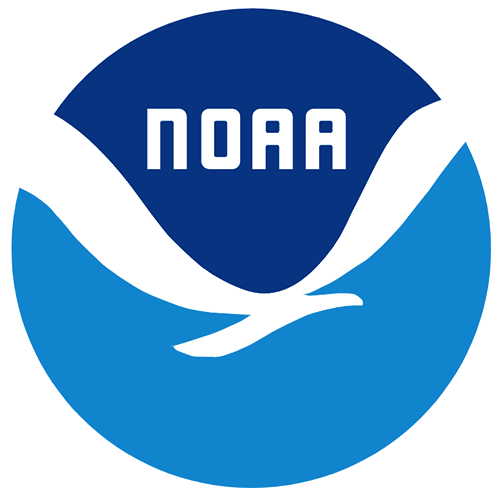2006 FEMA Lidar: Cumberland & York Counties (ME)
Welcome Guest ( Sign In )
NOAA
 In the fall of 2006, Sanborn Map Company was contracted by Camp Dresser McKee, Inc (CDM) to execute a LiDAR (Light Detection and Ranging) survey campaign in the state of Maine. LiDAR data in the form of 3-dimensional positions
of a dense set of masspoints was collected for the 584 sqaure miles of Cumberland and York Counties. This data was used in the development of the bare-earth-classified elevation point data sets. The Leica ALS-50 LiDAR system
was used to collect data for the whole survey campaign. The LiDAR system is calibrated by conducting flight passes over a known ground surface before and after each LiDAR mission. During final data processing, the calibration
parameters are inserted into post-processing software.
Six airborne GPS (Global Positioning System) base stations were used in this project. A new point was set at the Portland Airport (501) The other base stations were set up at National Geodetic Survey (NGS) markers. NGS Monuments
901- PID: OC0229 and 801 - PID: OC0230 are located at the Biddeford Airport. The other existing NGS monuments used in the network are point 701 - PID: AJ2697, located on Bailey Island, point 702 - PID: OC0429, located at Fort
Constitution, and point 703 - PID: OC0478 located southeast of York Beach were tied to the other three points to create a GPS survey network. The coordinates of these stations were checked against each other with the three
dimensional GPS baseline created at the airborne support set up and determined to be within project specifications.
Leica ALS-50 LiDAR Scanner Parameters:
Pulse Rate: 50,000 hertz
Scan Frequency: 36 hertz
Scan Width (Half Angle): 18 degrees
Flying Height: 1,200 meters above ground level
Flying Speed: ~120 knots
This data set is an LAZ (compressed LAS) format file containing LIDAR point cloud data.
In the fall of 2006, Sanborn Map Company was contracted by Camp Dresser McKee, Inc (CDM) to execute a LiDAR (Light Detection and Ranging) survey campaign in the state of Maine. LiDAR data in the form of 3-dimensional positions
of a dense set of masspoints was collected for the 584 sqaure miles of Cumberland and York Counties. This data was used in the development of the bare-earth-classified elevation point data sets. The Leica ALS-50 LiDAR system
was used to collect data for the whole survey campaign. The LiDAR system is calibrated by conducting flight passes over a known ground surface before and after each LiDAR mission. During final data processing, the calibration
parameters are inserted into post-processing software.
Six airborne GPS (Global Positioning System) base stations were used in this project. A new point was set at the Portland Airport (501) The other base stations were set up at National Geodetic Survey (NGS) markers. NGS Monuments
901- PID: OC0229 and 801 - PID: OC0230 are located at the Biddeford Airport. The other existing NGS monuments used in the network are point 701 - PID: AJ2697, located on Bailey Island, point 702 - PID: OC0429, located at Fort
Constitution, and point 703 - PID: OC0478 located southeast of York Beach were tied to the other three points to create a GPS survey network. The coordinates of these stations were checked against each other with the three
dimensional GPS baseline created at the airborne support set up and determined to be within project specifications.
Leica ALS-50 LiDAR Scanner Parameters:
Pulse Rate: 50,000 hertz
Scan Frequency: 36 hertz
Scan Width (Half Angle): 18 degrees
Flying Height: 1,200 meters above ground level
Flying Speed: ~120 knots
This data set is an LAZ (compressed LAS) format file containing LIDAR point cloud data.
